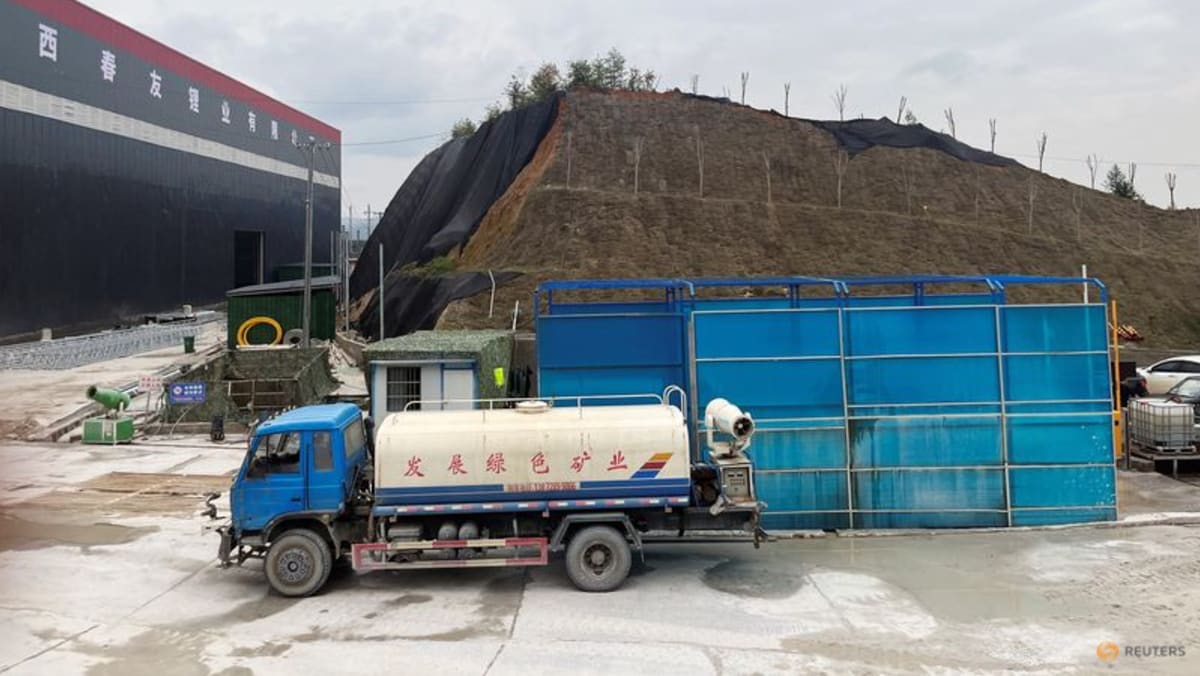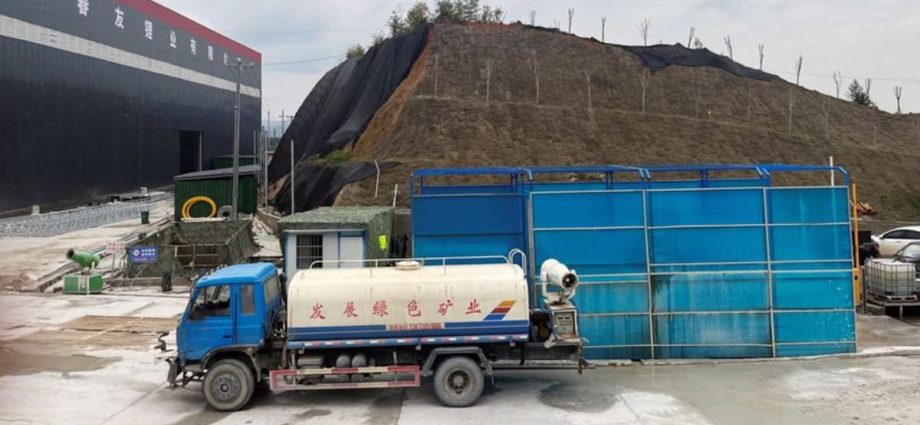
‘NATURAL RESOURCES CHAOS’
Further dimming the outlook for lepidolite, environmental damage is a growing concern.
Along the road to the Baishi mine, red banners implore: “Unite to crack down on natural resources chaos.”
Lepidolite extraction and smelting produce toxic by-products like thallium and tantalum that cause severe water pollution, said Wu Wei, an assistant professor at Xiamen University.
Yichun authorities have already found toxic substances in the Jin River, according to media reports.
Eric Norris, president of Energy Storage at the world’s top lithium miner Albemarle Corp, said miners in the US would never be allowed to do the kind of processing seen in China for lepidolite.
“It comes at a huge environmental cost,” Norris told Reuters in an interview.
In December, Yongxing Special Materials Technology said production at a subsidiary’s plant in Yichun was suspended for 10 days while authorities investigated abnormal water quality found in the Jin River.
Around the same time, Chinese media outlet The Paper said Yongxing’s plant was among four Yichun factories that suspended output after high levels of thallium were found in water samples from the river, a main source of water supply in the area.
Reuters has not independently confirmed the pollution incidents. Yongxing did not respond to emailed questions. Yichun government’s news department did not answer several calls. Jiangxi provincial government’s news department did not respond to a request for comment.
By 2025, if Yichun reached its target of 500,000 metric tons a year of lithium carbonate output, it would produce about 10 million tons of tailings, said Lv Jun, director of Yichun’s lithium battery new energy industry development centre.
That would be more than ten times the current tailings handling capacity in Yichun, said Ma Jun, director at the Institute of Public & Environmental Affairs (IPE), a non-profit organisation in Beijing, citing public information.
“Previously, local environmental supervision was not strict. As it gets stricter now, lithium resources in Yichun will lose their competitiveness with the higher costs for environmental protection,” Ma said.
For now, many companies are forging ahead, while seeking better control over costs, said Vicky Zhao, senior analyst at Fastmarkets. But questions linger over Yichun’s ambitions.
UBS analysts see China’s supply of lithium from lepidolite tripling to 280,000 metric tons, or 13 per cent of global supply, between 2022 and 2025, well short of Yichun’s target.
“Unless lepidolite producers find a way to solve the environment and costs issues via technology innovation and industry upgrade, it will remain a second choice to spodumene,” said Li Qi, an analyst at British consultancy Benchmark Mineral Intelligence.

